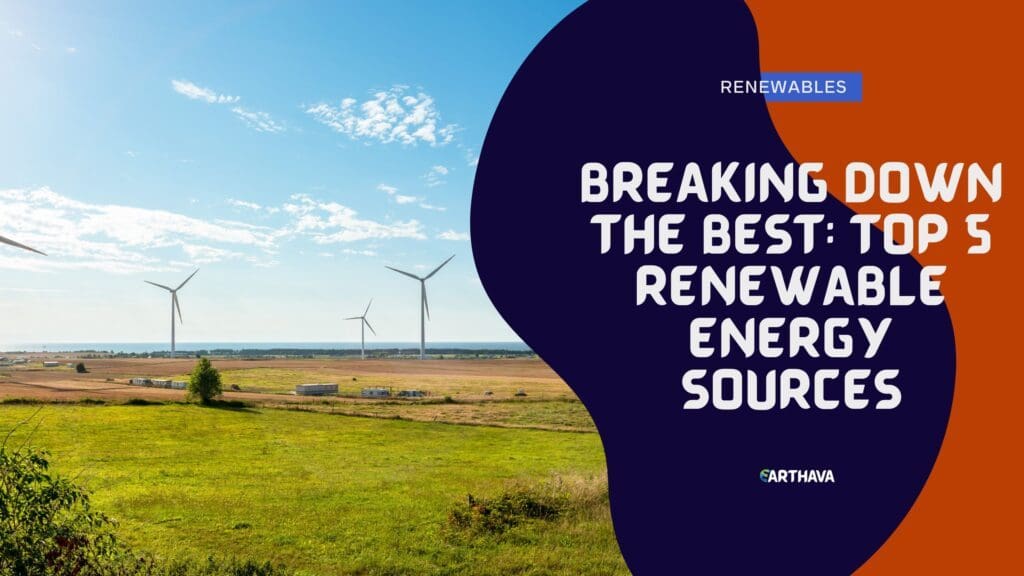The growing concern over pollution and climate change has numerous companies and individuals researching a need for change in energy sources. Fossil fuels have been the world’s energy resource for generations. With advancing technology, new clean and climate-stabilizing resources are available in the form of renewable energy.

In broad terms, renewable energy is created from natural resources that are continuously replenished. The environmental benefits of renewable energy exceed the creation of energy for common usage. Without the creation of pollutants, renewable energy is often referred to as green energy or clean energy.
Solar Energy
The use of solar or photovoltaic power involves harnessing the sun’s daily energy to produce an ongoing energy resource. The collection of solar power may be done with mirrors, heat-absorbing cellar panels, or semiconducting chips for conversion into energy. The efficiency and reliability of solar cells have increased over the years.
The units are easier to transport and install. Numerous building sites use solar panels during initial construction when other electrical resources are not readily available. According to Water Heater Hub, solar water heaters are becoming more popular each year, especially in warmer climates.
Their biggest downside is the high initial cost compared to more traditional models. Solar energy may be used throughout the average home or business for heating resources. By constructing large solar farms, the sun’s natural resource may be used to produce enough electricity for thousands of homes.
Wind Energy
The growth of the wind industry is proof of the success of converting a natural resource into a clean, affordable, and efficient energy resource. The production of wind energy occurs when the wind turbines harness the kinetic energy as the wind moves through the blades of the turbine. The turbines transfer the harnessed energy into electrical energy to be delivered to the attaching grid.
The use of wind power is continuously growing as large-scale wind farms are being constructed. With the lowest impact on the environment, wind farms are gaining in popularity. Currently, the costs are high for a large-scale wind turbine. Smaller residential units are being designed to help the average person reduce greenhouse emissions and lower electrical costs.
Biomass
Biomass converts waste materials into an energy resource. Depending on the area, biomass energy has both negative and positive attributes. Numerous companies are staying away from widespread usage by focusing on other renewable energy resources.
Biomass creates energy from corn stalks, grasses, and forest residues. As areas are cleared for biomass use, the protection of wildlife and the removal of decaying debris are two of the main environmentally friendly benefits.
Initially, biomass-producing energy resources are better than fossil fuels. The negative attributes may actually harm the environment which biomass energy is trying to protect. The main downside to biomass energy sources is the depletion or degrading of natural habitats. The reduction of natural resources threatens biodiversity and public health.
Hydro
Hydro-powered electricity is created from the use of flowing water from waves or a waterfall. The vast oceans are an ideal resource for the collection of hydroelectricity.
Hydropower is beneficial for both the surrounding local habitats and the entire global environment. A properly built and maintained hydro collecting unit does not create any type of direct waste. Smaller-scale hydro units are being installed in rural areas with small rivers or fast-flowing streams to help produce electricity.
Geothermal
Geothermal energy is produced from the Earth’s heat. Beneath the Earth’s surface, hot water, and hot rock is readily available. By converting the high-temperature heat into electricity, the heat resource is cost-effective, environmentally safe, and reliable. Both residential areas and businesses may benefit from the use of geothermal power to adequately produce energy for the establishments.
Renewable energy resources are the future for the world’s growing electricity needs. Advancing technology has allowed companies to create efficient methods for harnessing various renewable energy resources. As the efficiency rises, the effectiveness increases allowing for widespread use in both residential and industrial communities.
Along with creating an environmentally friendly impact, renewable energy increases the need for employment within a specialized field. The renewable energy industry will continue to grow as the need for harnessing natural resources increases.


